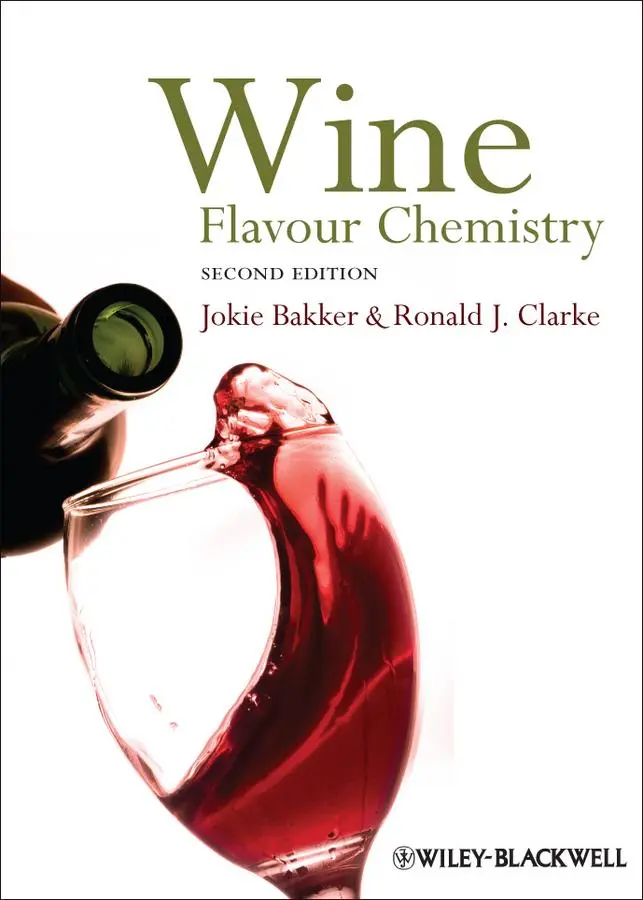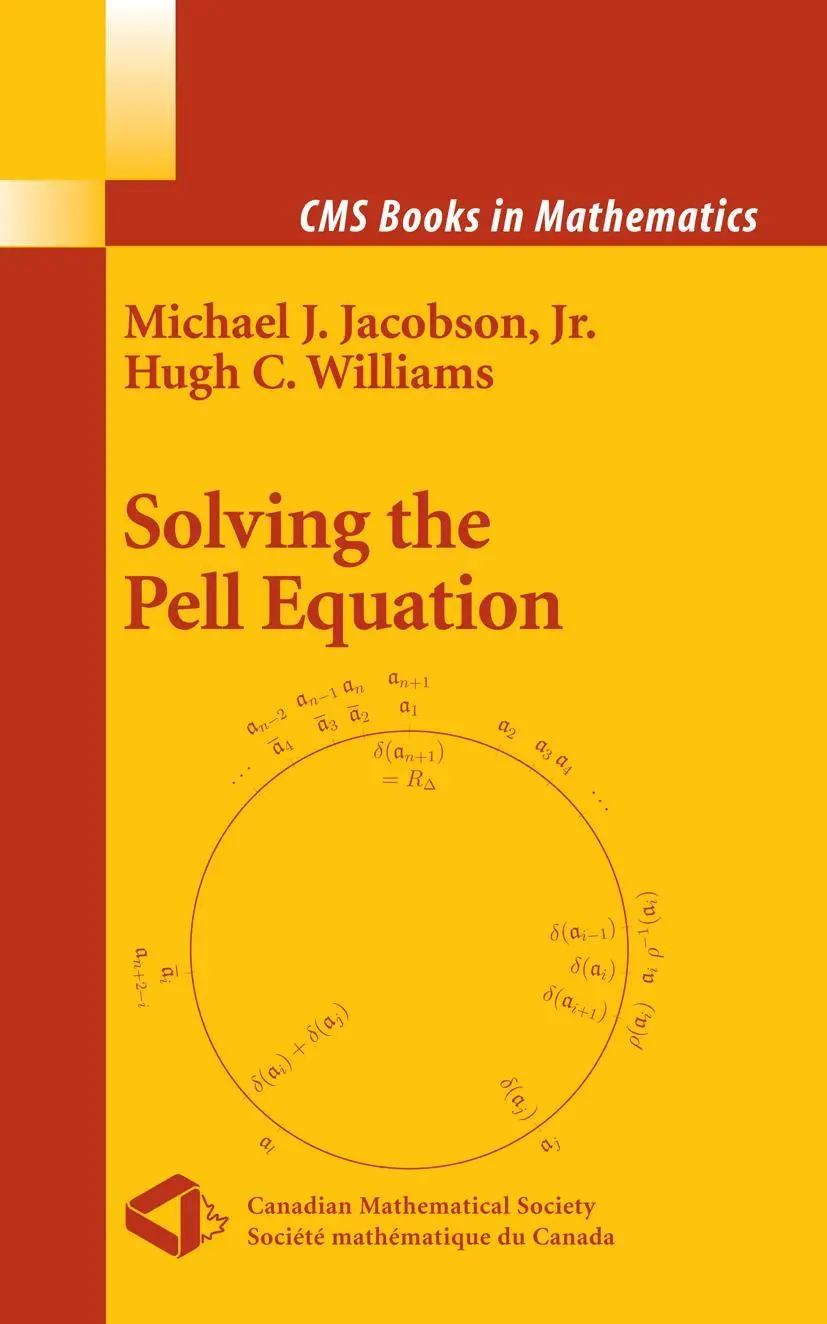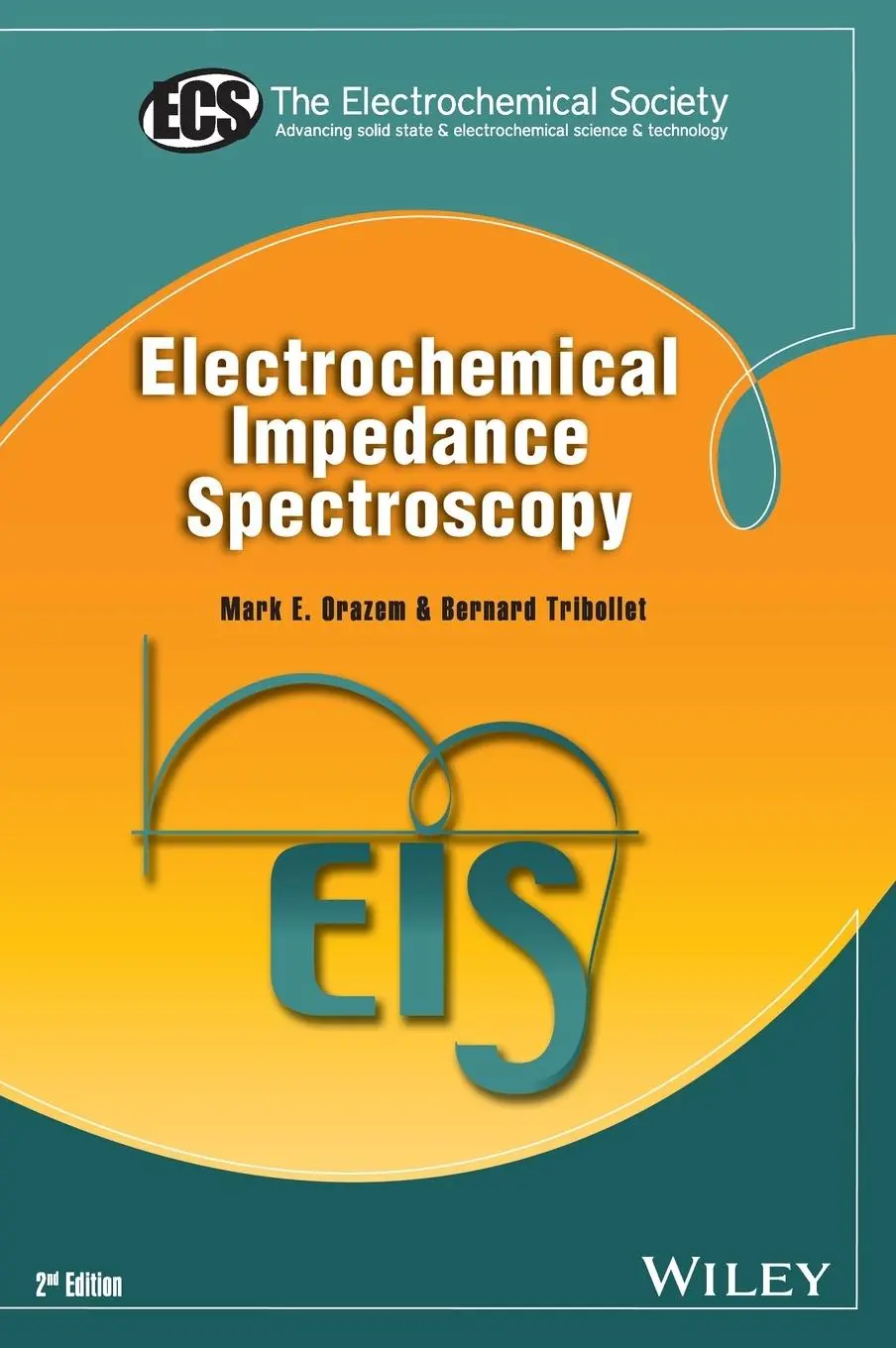200,50 €*
Versandkostenfrei per Post / DHL
Aktuell nicht verfügbar
Wine Flavour Chemistry is essential reading for all those involved in commercial wine making, whether in production, trade or research. The book is of great use and interest to all enologists, and to food and beverage scientists and technologists working in commerce and academia. Upper level students and teachers on enology courses will need to read this book: wherever food and beverage science, technology and chemistry are taught, libraries should have multiple copies of this important book.
Wine Flavour Chemistry is essential reading for all those involved in commercial wine making, whether in production, trade or research. The book is of great use and interest to all enologists, and to food and beverage scientists and technologists working in commerce and academia. Upper level students and teachers on enology courses will need to read this book: wherever food and beverage science, technology and chemistry are taught, libraries should have multiple copies of this important book.
Dr Ronald J. Clarke is a writer and food industry consultant based in Chichester, UK, and is co-editor of Coffee: Recent Developments.
Preface to the Second Edition xv
Preface to the First Edition xvii
1 Introduction 1
1.1 Scope of the book 1
1.2 Historical background 2
1.3 Wine flavour 3
1.4 Wine colour 6
1.5 Vinification 6
1.5.1 Vinification process 8
Pre-fermentation 9
Fermentation 15
Post-fermentation 17
1.5.2 Red wines 22
Pre-fermentation 22
Fermentation 23
Post-fermentation 24
1.5.3 White wines 25
Pre-fermentation 26
Fermentation 27
Post-fermentation 28
1.5.4 Specialized wines 28
Rosé wines 28
Wines made from organically farmed grapes 29
Wines with added resin 30
Wines with low alcohol content 31
Sweet wines 31
Sparkling wine in Champagne 32
Sparkling wine by other methods 33
Wines by carbonic maceration 34
Wines by thermovinification 34
Wines matured Sur Lie 35
1.5.5 Fortified wines 35
Port wine 36
Sherry 38
Madeira 40
1.6 Physiological effects 42
1.6.1 Attributed negative effects 43
1.6.2 Wine ethyl alcohol (ethanol) 43
1.6.3 Effects of phenols 45
Resveratrol 46
Bibliography 48
2 Grape Varieties and Growing Regions 53
2.1 Wine grapes 53
2.2 Vine plant characteristics 56
2.3 Soil, climate and ripeness 57
2.3.1 Soil 57
2.3.2 Climate 58
2.3.3 Ripeness 64
2.4 Grape growing regions of the world 65
2.4.1 World wine production 65
2.4.2 Regions 66
2.5 Chemical composition of grapes, must and finished wines 71
2.5.1 Grapes and must 71
2.5.2 Finished wine 79
2.6 Quality control and classification of wines 79
2.6.1 France 79
2.6.2 Germany 82
2.6.3 Italy 83
2.6.4 Spain 84
2.6.5 Australia 84
2.6.6 USA 85
2.6.7 Quality control systems in the European Union 86
Bibliography 87
3 Basic Taste and Stimulant Components 89
3.1 Introduction 89
3.2 Basic taste perception 90
3.2.1 Role of taste 90
3.2.2 Taste perception mechanism 91
3.3 Ethyl alcohol 92
3.3.1 Measurement of ethyl alcohol content in wines 93
3.3.2 Measurement of sugar content in musts and wines 94
Brix scale 94
Baumé and Oeschele scales 96
Prediction of alcohol content in the finished wine 96
3.3.3 Sugar content of grapes and must 97
3.3.4 Chaptalization 98
3.4 Acidity 99
3.4.1 Contents of organic acids 100
3.4.2 Measurement of acid content 104
3.4.3 Acid taste 105
3.5 Sweetness 109
3.5.1 Chemical structure of sugars 109
3.5.2 Content/sweetness 109
3.6 Bitterness, astringency and mouthfeel 113
3.6.1 Basic chemistry 113
Non-flavanoids 113
Flavan-3-ols 114
Flavonoids 116
Anthocyanins 117
3.6.2 Basic technology 118
Location of polyphenols in grapes 118
Use of the term 'tannins' and their classification 119
Grape tannins 120
Quantifying methods 121
HPLC measurements 122
Other methods 123
Analyses in grapes and during wine-making 124
3.6.3 Bitter constituents 127
White wines 127
Red wines 127
3.6.4 Astringency 127
3.6.5 Mouthfeel 128
3.7 Colouring matter 129
3.7.1 Colour of red wines 129
3.7.2 Colour of white wines 132
3.8 Other constituents 134
3.8.1 Sulfur dioxide 134
Basic chemistry 135
Technical use 135
Taste effects 136
3.8.2 Carbon dioxide 136
Formation and handling of CO 2 137
Sensory factors 137
3.8.3 Oxygen 138
Basic chemistry 138
Oxygen content in wines 139
Effect of oxygen on wine 141
3.9 Changes in maturation 142
3.9.1 'In-barrel' ageing 143
Vats 143
Extraction from barrels 144
Oxidation in barrels 145
3.9.2 'In-bottle' ageing 146
3.9.3 Oxidation-reduction (redox) potential 146
General 147
Nernst equation 147
Redox potentials in wine 148
Redox potentials during vinification 149
Bibliography 150
4 Volatile Components 155
4.1 General 155
4.1.1 Sensory perception 156
4.1.2 Partition coefficients 158
4.1.3 Threshold flavour/odour levels 161
Units 163
Consistency of threshold odour levels 164
Threshold level difference between sniffing and tasting 164
Threshold levels in solutions of dissolved substances in water and in beverages 166
Relationship of threshold values to partition coefficients 168
Volatile compound concentration in the vapour phase 170
4.1.4 Flavour/odour descriptions 173
Use of word descriptions 173
Intensity of flavour/odour 175
4.2 Volatile compounds detected in wines 175
4.2.1 Types of aroma in volatile compounds 178
4.2.2 Stereochemical effects in aroma volatile compounds 180
4.3 Contents and sensory evaluation data 180
4.3.1 Esters 180
Structure 181
Presence in wines 181
Flavour characteristics 182
4.3.2 Aldehydes 189
Presence in wine 189
Flavour characteristics 190
4.3.3 Ketones 190
Presence in wines 190
Flavour characteristics 190
4.3.4 Acetals 196
4.3.5 Alcohols 197
Presence in wines 197
Flavour characteristics 201
4.3.6 Lactones and furanones 201
Molecular structures 201
Presence in wines 205
Flavour characteristics 207
4.3.7 Acids 207
Presence in wines 207
Flavour characterisitcs 208
4.3.8 Nitrogeneous compounds 208
4.3.9 Phenols 209
Presence in wines 209
Flavour characteristics 209
4.3.10 Terpenes 209
Chemical structure 209
Presence in grapes/wines 213
Flavour characteristics 215
4.3.11 Pyrazines 216
Chemical structure 216
Presence in grapes/wines 216
Flavour characteristics 216
4.3.12 Sulfur compounds 219
Chemical structure 219
Presence in wines 219
Flavour characteristics 220
4.4 Changes during maturation 221
4.4.1 Fermentation and storage of wines 'in-vat (tank)' and 'in-barrel (cask)' 221
Fermentation 221
Storage 222
4.4.2 'In-bottle' ageing 224
Changes in ester content 225
Substances produced by carbohydrate degradation 225
Sulfur compounds 225
Changes in terpenoids 225
Formation of substances from carotene breakdown 226
4.5 Aroma detection and quantification 227
4.5.1 Gas chromatography 227
4.5.2 Sample preparation 228
4.5.3 Olfactometry 230
4.6 Chemical structure and physical properties 231
Bibliography 231
5 Wine Tasting Procedures and Overall Wine Flavour 239
5.1 Wine tasting 239
5.2 Wine tasting procedure 241
5.2.1 Tasting glass 241
5.2.2 Serving 243
5.2.3 Visual 243
5.2.4 Smell 244
5.2.5 Flavour 246
5.2.6 Interactions 247
5.2.7 Astringency 248
5.2.8 Judging the wine 249
5.2.9 Reasons for wine tasting 250
Sensory analysis 250
Quality tastings 251
Identifying wines by tasting 251
Sensory analyses used in research 252
Consumer tasting 252
Analytical tasting 253
5.2.10 Wine tasting information and analysis 254
Statistical analysis 254
5.3 Factors influencing sensory perception 256
5.3.1 Threshold and sensitivity 257
5.3.2 Vocabulary 258
5.4 Balance of taste sensations in wine 258
5.5 Wine aromas 259
5.5.1 Odour/aroma classification 261
5.5.2 Aroma/odour characteristics of wines from particular grape varieties 262
5.5.3 Variants in Cabernet Sauvignon wine flavour 270
5.5.4 Variants of Chardonnay wine flavour 271
5.5.5 Flavour description of some other commercial wines 273
5.5.6 Off-odours and taints 274
Cork taint 275
Mousiness 278
Ethylphenols 279
5.6 Wine and food flavour 279
5.7 Aroma indices and statistical methods 282
5.7.1 Flavour unit concept 282
5.7.2 Odour activity unit 284
5.7.3 Multivariate and other statistical procedures 285
Bibliography 288
6 Sherry, Port and Madeira 291
6.1 Introduction 291
6.1.1 Sherry introduction 291
6.1.2 Port introduction 292
6.1.3 Madeira introduction 292
6.1.4 Comparisons between fortified wines 293
6.1.5 Ethyl alcohol - sensory effect 294
6.1.6 Ethyl alcohol - chemical effect 295
6.1.7 Sweetness 295
6.2 Sherry 295
6.2.1 Wine producers 296
6.2.2 Commercial wine styles 296
6.2.3 Wine writers' comments 297
6.2.4 Grapes and must 297
6.2.5 Base wine 298
6.2.6 Maturation 299
6.2.7 Maturation changes under flor 299
6.2.8 Maturation changes without flor 301
6.2.9 Maturation with and without flor 302
6.2.10 Volatile compounds 302
6.2.11 Changes during maturation in phenolic compound content 309
6.3 Port wine 311
6.3.1 Port wine producers 311
6.3.2 Commercial Port wine styles 312
6.3.3 Wine writers' comments 313
6.3.4 Grapes and must 314
6.3.5 Fermentation and base Port wine 315
6.3.6 Port wine compared to red table wine 317
6.3.7 Maturation 318
6.3.8 Colour changes during maturation 318
6.3.9 Volatile changes during maturation 322
6.4 Madeira 327
6.4.1 Madeira wine producers 327
6.4.2 Commercial Madeira wine styles 327
6.4.3 Wine writers' comments 328
6.4.4 Sensory properties 328
6.4.5...
| Erscheinungsjahr: | 2011 |
|---|---|
| Fachbereich: | Landwirtschaft & Gartenbau |
| Genre: | Importe, Umwelt |
| Produktart: | Nachschlagewerke |
| Rubrik: | Ökologie |
| Medium: | Buch |
| Inhalt: | 440 S. |
| ISBN-13: | 9781444330427 |
| ISBN-10: | 144433042X |
| Sprache: | Englisch |
| Herstellernummer: | 1A444330420 |
| Einband: | Gebunden |
| Autor: |
Bakker, Jokie
Clarke, Ronald J |
| Auflage: | 2nd Revised edition |
| Hersteller: |
Wiley
John Wiley & Sons |
| Verantwortliche Person für die EU: | Wiley-VCH GmbH, Boschstr. 12, D-69469 Weinheim, product-safety@wiley.com |
| Maße: | 251 x 179 x 30 mm |
| Von/Mit: | Jokie Bakker (u. a.) |
| Erscheinungsdatum: | 30.11.2011 |
| Gewicht: | 1,108 kg |
Dr Ronald J. Clarke is a writer and food industry consultant based in Chichester, UK, and is co-editor of Coffee: Recent Developments.
Preface to the Second Edition xv
Preface to the First Edition xvii
1 Introduction 1
1.1 Scope of the book 1
1.2 Historical background 2
1.3 Wine flavour 3
1.4 Wine colour 6
1.5 Vinification 6
1.5.1 Vinification process 8
Pre-fermentation 9
Fermentation 15
Post-fermentation 17
1.5.2 Red wines 22
Pre-fermentation 22
Fermentation 23
Post-fermentation 24
1.5.3 White wines 25
Pre-fermentation 26
Fermentation 27
Post-fermentation 28
1.5.4 Specialized wines 28
Rosé wines 28
Wines made from organically farmed grapes 29
Wines with added resin 30
Wines with low alcohol content 31
Sweet wines 31
Sparkling wine in Champagne 32
Sparkling wine by other methods 33
Wines by carbonic maceration 34
Wines by thermovinification 34
Wines matured Sur Lie 35
1.5.5 Fortified wines 35
Port wine 36
Sherry 38
Madeira 40
1.6 Physiological effects 42
1.6.1 Attributed negative effects 43
1.6.2 Wine ethyl alcohol (ethanol) 43
1.6.3 Effects of phenols 45
Resveratrol 46
Bibliography 48
2 Grape Varieties and Growing Regions 53
2.1 Wine grapes 53
2.2 Vine plant characteristics 56
2.3 Soil, climate and ripeness 57
2.3.1 Soil 57
2.3.2 Climate 58
2.3.3 Ripeness 64
2.4 Grape growing regions of the world 65
2.4.1 World wine production 65
2.4.2 Regions 66
2.5 Chemical composition of grapes, must and finished wines 71
2.5.1 Grapes and must 71
2.5.2 Finished wine 79
2.6 Quality control and classification of wines 79
2.6.1 France 79
2.6.2 Germany 82
2.6.3 Italy 83
2.6.4 Spain 84
2.6.5 Australia 84
2.6.6 USA 85
2.6.7 Quality control systems in the European Union 86
Bibliography 87
3 Basic Taste and Stimulant Components 89
3.1 Introduction 89
3.2 Basic taste perception 90
3.2.1 Role of taste 90
3.2.2 Taste perception mechanism 91
3.3 Ethyl alcohol 92
3.3.1 Measurement of ethyl alcohol content in wines 93
3.3.2 Measurement of sugar content in musts and wines 94
Brix scale 94
Baumé and Oeschele scales 96
Prediction of alcohol content in the finished wine 96
3.3.3 Sugar content of grapes and must 97
3.3.4 Chaptalization 98
3.4 Acidity 99
3.4.1 Contents of organic acids 100
3.4.2 Measurement of acid content 104
3.4.3 Acid taste 105
3.5 Sweetness 109
3.5.1 Chemical structure of sugars 109
3.5.2 Content/sweetness 109
3.6 Bitterness, astringency and mouthfeel 113
3.6.1 Basic chemistry 113
Non-flavanoids 113
Flavan-3-ols 114
Flavonoids 116
Anthocyanins 117
3.6.2 Basic technology 118
Location of polyphenols in grapes 118
Use of the term 'tannins' and their classification 119
Grape tannins 120
Quantifying methods 121
HPLC measurements 122
Other methods 123
Analyses in grapes and during wine-making 124
3.6.3 Bitter constituents 127
White wines 127
Red wines 127
3.6.4 Astringency 127
3.6.5 Mouthfeel 128
3.7 Colouring matter 129
3.7.1 Colour of red wines 129
3.7.2 Colour of white wines 132
3.8 Other constituents 134
3.8.1 Sulfur dioxide 134
Basic chemistry 135
Technical use 135
Taste effects 136
3.8.2 Carbon dioxide 136
Formation and handling of CO 2 137
Sensory factors 137
3.8.3 Oxygen 138
Basic chemistry 138
Oxygen content in wines 139
Effect of oxygen on wine 141
3.9 Changes in maturation 142
3.9.1 'In-barrel' ageing 143
Vats 143
Extraction from barrels 144
Oxidation in barrels 145
3.9.2 'In-bottle' ageing 146
3.9.3 Oxidation-reduction (redox) potential 146
General 147
Nernst equation 147
Redox potentials in wine 148
Redox potentials during vinification 149
Bibliography 150
4 Volatile Components 155
4.1 General 155
4.1.1 Sensory perception 156
4.1.2 Partition coefficients 158
4.1.3 Threshold flavour/odour levels 161
Units 163
Consistency of threshold odour levels 164
Threshold level difference between sniffing and tasting 164
Threshold levels in solutions of dissolved substances in water and in beverages 166
Relationship of threshold values to partition coefficients 168
Volatile compound concentration in the vapour phase 170
4.1.4 Flavour/odour descriptions 173
Use of word descriptions 173
Intensity of flavour/odour 175
4.2 Volatile compounds detected in wines 175
4.2.1 Types of aroma in volatile compounds 178
4.2.2 Stereochemical effects in aroma volatile compounds 180
4.3 Contents and sensory evaluation data 180
4.3.1 Esters 180
Structure 181
Presence in wines 181
Flavour characteristics 182
4.3.2 Aldehydes 189
Presence in wine 189
Flavour characteristics 190
4.3.3 Ketones 190
Presence in wines 190
Flavour characteristics 190
4.3.4 Acetals 196
4.3.5 Alcohols 197
Presence in wines 197
Flavour characteristics 201
4.3.6 Lactones and furanones 201
Molecular structures 201
Presence in wines 205
Flavour characteristics 207
4.3.7 Acids 207
Presence in wines 207
Flavour characterisitcs 208
4.3.8 Nitrogeneous compounds 208
4.3.9 Phenols 209
Presence in wines 209
Flavour characteristics 209
4.3.10 Terpenes 209
Chemical structure 209
Presence in grapes/wines 213
Flavour characteristics 215
4.3.11 Pyrazines 216
Chemical structure 216
Presence in grapes/wines 216
Flavour characteristics 216
4.3.12 Sulfur compounds 219
Chemical structure 219
Presence in wines 219
Flavour characteristics 220
4.4 Changes during maturation 221
4.4.1 Fermentation and storage of wines 'in-vat (tank)' and 'in-barrel (cask)' 221
Fermentation 221
Storage 222
4.4.2 'In-bottle' ageing 224
Changes in ester content 225
Substances produced by carbohydrate degradation 225
Sulfur compounds 225
Changes in terpenoids 225
Formation of substances from carotene breakdown 226
4.5 Aroma detection and quantification 227
4.5.1 Gas chromatography 227
4.5.2 Sample preparation 228
4.5.3 Olfactometry 230
4.6 Chemical structure and physical properties 231
Bibliography 231
5 Wine Tasting Procedures and Overall Wine Flavour 239
5.1 Wine tasting 239
5.2 Wine tasting procedure 241
5.2.1 Tasting glass 241
5.2.2 Serving 243
5.2.3 Visual 243
5.2.4 Smell 244
5.2.5 Flavour 246
5.2.6 Interactions 247
5.2.7 Astringency 248
5.2.8 Judging the wine 249
5.2.9 Reasons for wine tasting 250
Sensory analysis 250
Quality tastings 251
Identifying wines by tasting 251
Sensory analyses used in research 252
Consumer tasting 252
Analytical tasting 253
5.2.10 Wine tasting information and analysis 254
Statistical analysis 254
5.3 Factors influencing sensory perception 256
5.3.1 Threshold and sensitivity 257
5.3.2 Vocabulary 258
5.4 Balance of taste sensations in wine 258
5.5 Wine aromas 259
5.5.1 Odour/aroma classification 261
5.5.2 Aroma/odour characteristics of wines from particular grape varieties 262
5.5.3 Variants in Cabernet Sauvignon wine flavour 270
5.5.4 Variants of Chardonnay wine flavour 271
5.5.5 Flavour description of some other commercial wines 273
5.5.6 Off-odours and taints 274
Cork taint 275
Mousiness 278
Ethylphenols 279
5.6 Wine and food flavour 279
5.7 Aroma indices and statistical methods 282
5.7.1 Flavour unit concept 282
5.7.2 Odour activity unit 284
5.7.3 Multivariate and other statistical procedures 285
Bibliography 288
6 Sherry, Port and Madeira 291
6.1 Introduction 291
6.1.1 Sherry introduction 291
6.1.2 Port introduction 292
6.1.3 Madeira introduction 292
6.1.4 Comparisons between fortified wines 293
6.1.5 Ethyl alcohol - sensory effect 294
6.1.6 Ethyl alcohol - chemical effect 295
6.1.7 Sweetness 295
6.2 Sherry 295
6.2.1 Wine producers 296
6.2.2 Commercial wine styles 296
6.2.3 Wine writers' comments 297
6.2.4 Grapes and must 297
6.2.5 Base wine 298
6.2.6 Maturation 299
6.2.7 Maturation changes under flor 299
6.2.8 Maturation changes without flor 301
6.2.9 Maturation with and without flor 302
6.2.10 Volatile compounds 302
6.2.11 Changes during maturation in phenolic compound content 309
6.3 Port wine 311
6.3.1 Port wine producers 311
6.3.2 Commercial Port wine styles 312
6.3.3 Wine writers' comments 313
6.3.4 Grapes and must 314
6.3.5 Fermentation and base Port wine 315
6.3.6 Port wine compared to red table wine 317
6.3.7 Maturation 318
6.3.8 Colour changes during maturation 318
6.3.9 Volatile changes during maturation 322
6.4 Madeira 327
6.4.1 Madeira wine producers 327
6.4.2 Commercial Madeira wine styles 327
6.4.3 Wine writers' comments 328
6.4.4 Sensory properties 328
6.4.5...
| Erscheinungsjahr: | 2011 |
|---|---|
| Fachbereich: | Landwirtschaft & Gartenbau |
| Genre: | Importe, Umwelt |
| Produktart: | Nachschlagewerke |
| Rubrik: | Ökologie |
| Medium: | Buch |
| Inhalt: | 440 S. |
| ISBN-13: | 9781444330427 |
| ISBN-10: | 144433042X |
| Sprache: | Englisch |
| Herstellernummer: | 1A444330420 |
| Einband: | Gebunden |
| Autor: |
Bakker, Jokie
Clarke, Ronald J |
| Auflage: | 2nd Revised edition |
| Hersteller: |
Wiley
John Wiley & Sons |
| Verantwortliche Person für die EU: | Wiley-VCH GmbH, Boschstr. 12, D-69469 Weinheim, product-safety@wiley.com |
| Maße: | 251 x 179 x 30 mm |
| Von/Mit: | Jokie Bakker (u. a.) |
| Erscheinungsdatum: | 30.11.2011 |
| Gewicht: | 1,108 kg |





